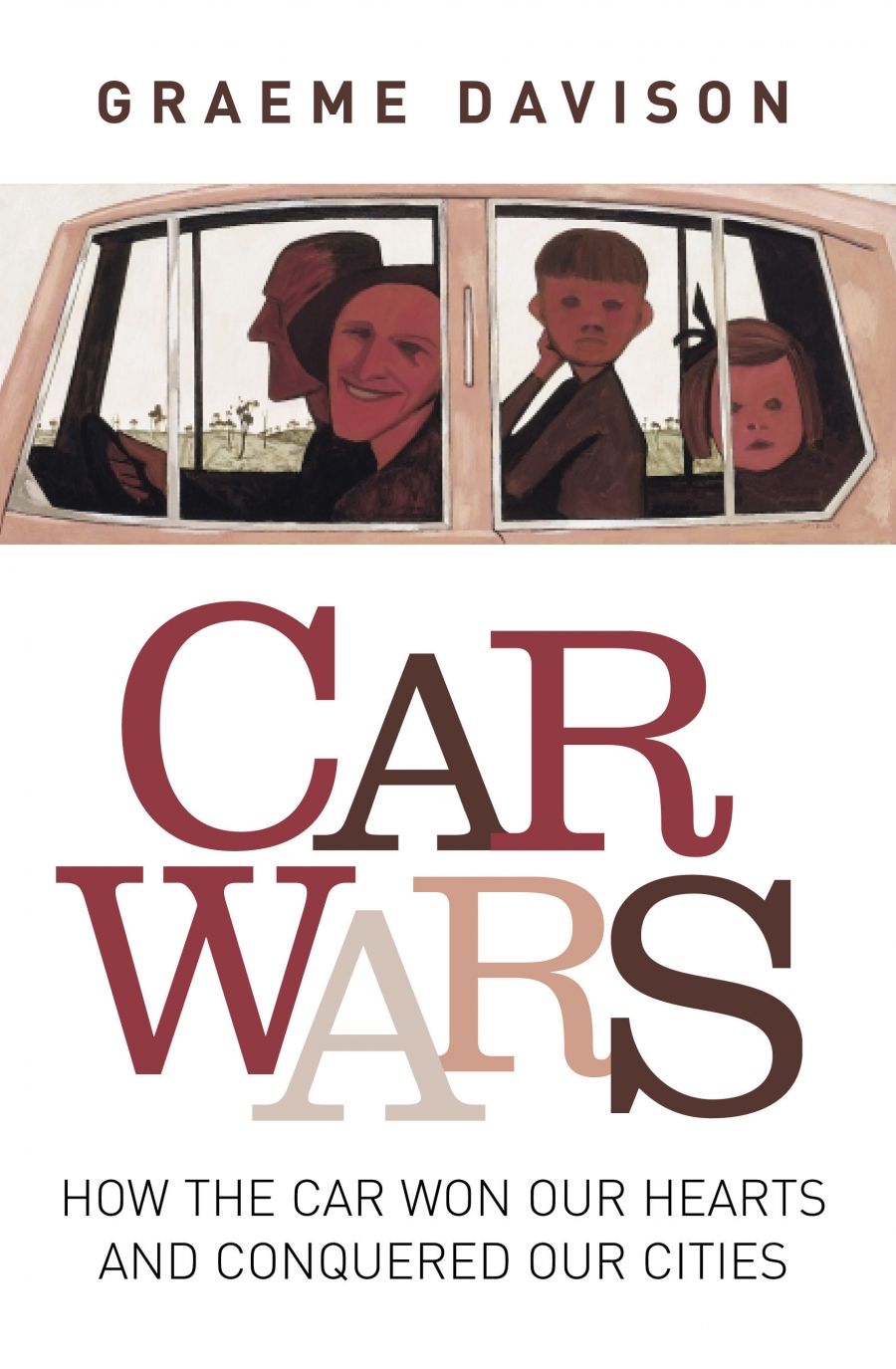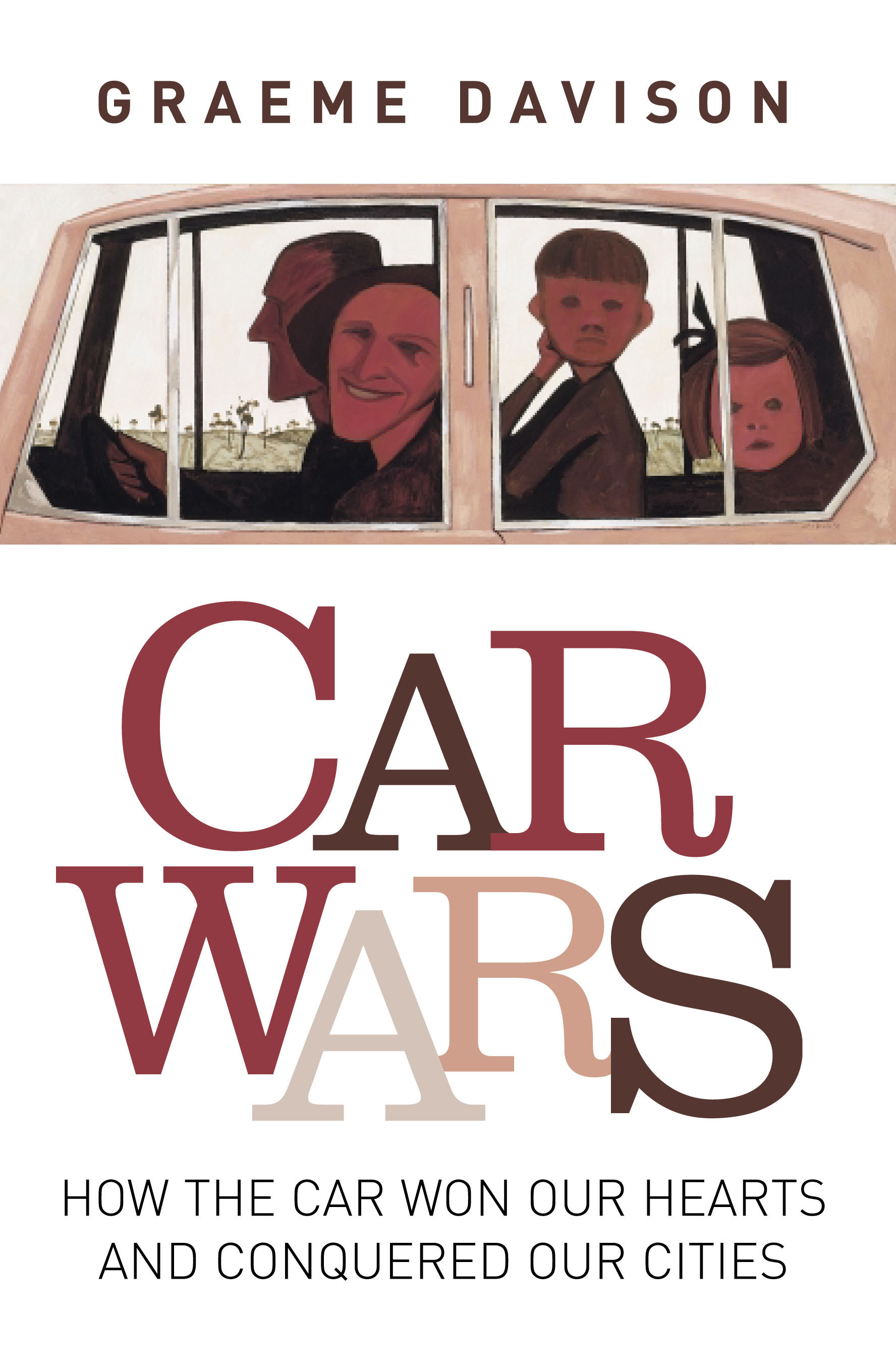
- Free Article: No
- Review Article: Yes
- Online Only: No
- Custom Highlight Text:
To read this story of ‘how the car conquered our hearts and conquered our cities’ is to feel invited – to reflect, as its author Graeme Davison does in his introduction, on one’s own relationship with the automobile. And it requires immediate admission: mine is minimal. I do not, cannot, and probably never will drive a car. I am noted among friends for a casual attitude to such niceties as locking doors. Only with difficulty have I mastered the operation of a petrol bowser.
- Book 1 Title: Car Wars
- Book 1 Subtitle: How the car won our hearts and conquered our cities
- Book 1 Biblio: Allen & Unwin, $29.95 pb, 308 pp
- Book 1 Cover Small (400 x 600):

- Book 1 Cover (800 x 1200):

Choosing his subject, Davison must thread a rocky and rutted socio-political road. The right tends to see the car expressing the yen for personal freedom; thus, for example, P.J. O’Rourke’s profitable sideline in automotive journalism: ‘Cars are good. If you don’t think so, try making out in a country lane on Rollerblades, you ecoweenie.’ The left, in its unending wrangle with modernity, returns the car’s embrace with deepest ambivalence. In a spirited debate in Prospect three years ago, ‘Can We Love The Car?’, Greenpeace’s Stephen Tindale admitted: ‘In a utopian, William Morris kind of way, I wish they had never been invented.’
Davison adeptly avoids ideological blind alleys. ‘Terrace dwelling intellectuals,’ he notes, ‘occasionally sneer at the delight of suburban Australians in their cars.’ The author of The Rise and Fall of Marvellous Melbourne (1978) has offered us what might be considered The Steady Advance of Modest Melbourne, dedicated to the father who once thrilled him by buying a Chevrolet utility with cream duco and chromium grille, and rejoicing in details such as the marque honoured in John Brack’s The Car (it’s a Triumph Mayflower, should you be wondering).
Car Wars is concerned, broadly, with three subjects: the car as aspirational object, as emancipator and eviscerator, and as reshaper of lifestyles and of landscapes. Readers of Davison’s The Unforgiving Minute (1993) and The Use and Abuse of Australian History (2000) will know that he is one of Australian history’s deftest value-adders – a pocketer, like Geoffrey Blainey and Ken Inglis, of unconsidered trifles. And here he is in top form. He cites a car magazine description of a Holden wagon as ‘a capable, agile six-seater with ample room for carriage of light goods, a moderate thirst, unassuming good looks, and uncanny capacity for hard work’, and decides that the writer ‘might almost have been describing the ideal Australian family man himself’. He explores Vermont’s Pin Oak Court, famous for its telegenia as Ramsay Street, and notices the incongruity of its idealised image: ‘Vermont is a suburb created by the car but in the television world of Neighbours, the car is all but invisible. Fiction has filtered out the traffic noise, the pollution, the visual clutter of autopia.’ When Davison uses statistics, it is to economical and arresting effect, from the startling intelligence that more people were killed or injured on Australian roads than on active service between 1939 and 1946, to his note that the proportion of engaged couples from the same or adjoining suburbs fell from about six in ten to four in ten between 1950 and 1970, thanks to enhanced intra-urban mobility.
Davison also finds those voices that provide the soundtrack for eras and attitudes. It’s hard not to warm to George Broadbent, who set a penny farthing endurance record, founded a touring map company, then was, for decades, Victoria’s ‘man behind the wheel’, as Argus motor correspondent. In the days when pioneer RACV members were exhorted to greet one another on the road with a comradely toot, Broadbent deplored arbitrary speed limits, believing that ‘motor owners largely are drawn from that numerous and respectable class of successful citizens who realise the value and need for law and order, and are guarded in their actions by humane instincts’. Davison comments drolly: ‘The voice of the man behind the wheel was uncannily like the voice of Robert Menzies’ Forgotten People.’ But the political leader who most provocatively exploited automotive symbolism, the historian believes, was Jeff Kennett: aroused by the very thought of Formula One, his ‘on the move’ slogan reeked of the open road. ‘The smell of benzene,’ writes Davison in a delightfully playful passage, ‘seemed to arouse his native recklessness’ – even when conversing on his car phone.
Davison himself is far from reckless, and does not range far in his excursions: he is like the driver who prefers not to depart from favourite routes and detours. A consideration of Australia’s ‘ongoing love affair with a machine’ is promised. But Davison’s forays into car aesthetic and cultures are rather chaste; the impact of postwar migration on codes of buying and owning behaviour, for example, go unconsidered. Davison’s office, he confides, overlooks the barren expanse of Nissan’s abandoned Westall plant. But the role of an onshore manufacturing industry in Australia’s urban geography and demography is likewise unexamined.
One issue seems an especially notable omission: the quality and temper of Australian driving. Our regard for road rules entwines two sturdy strands in the national story: our wild colonial boyishness and our tendency to authoritarianism. ‘So many Australians equate driving with masculinity,’ Ian Moffitt observed drolly in The U-Jack Society (1972). ‘Pass them and they suffer instant emasculation.’ Injunctions to safety and sobriety, furthermore, do not seem to have curbed the emergence of the pathologies known as ‘road rage’ and ‘white line fever’.
Yet we are untiring in surveillance and policing, apt to shame road miscreants and malefactors, and maintain some customs with wilful pride. Alas, Car Wars features no discussion of Melbourne’s most famous automotive artefact, the right-hand turn. Davison is a supremely sensitive writer where issues of community are concerned. In his detailed examination of the civil disobedience that checked the relentless march of Melbourne’s freeways, he applies Thomas Bender’s argument that community is as much experience as place to Melbourne’s upheavals: ‘It was something that “happened” in the process of resisting its extinction, and that began to die at the very moment success came in sight.’ But Davison overlooks, I think, that the roads themselves are a community of sorts, replete with rights and responsibilities, prohibitions and politesse – and one that, surprisingly in these days of dwindling social capital and crumbling institutions, seems to work. It is a community, moreover, in whose orderly future conduct all have a stake – even those of us whose favourite automotive expression is: ‘Wanna lift?’


Comments powered by CComment